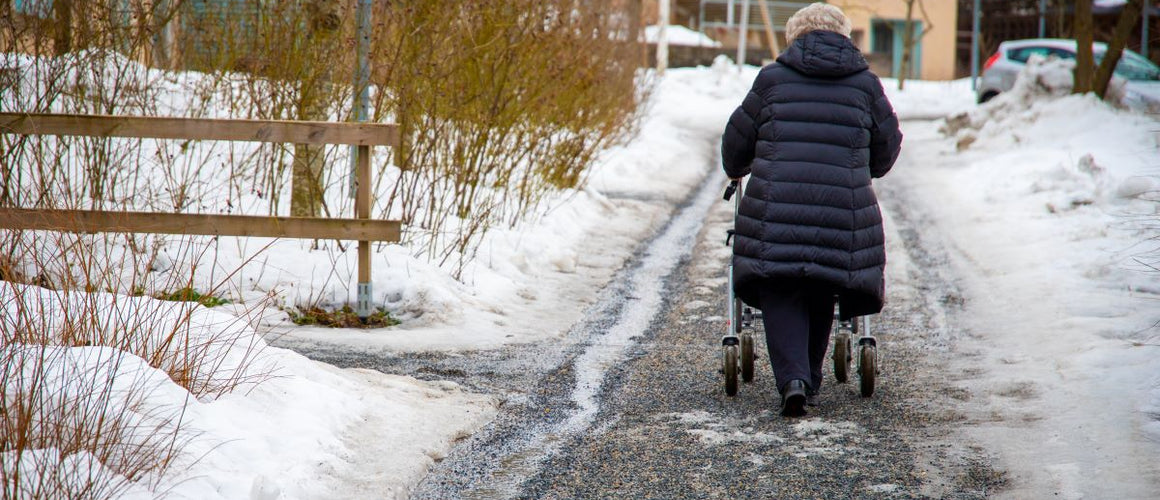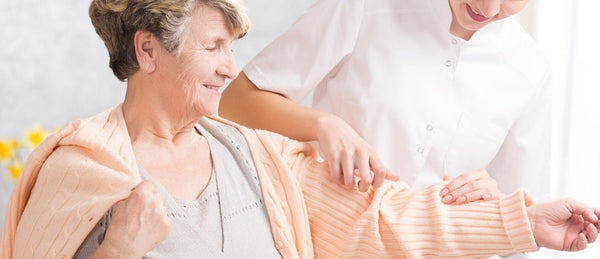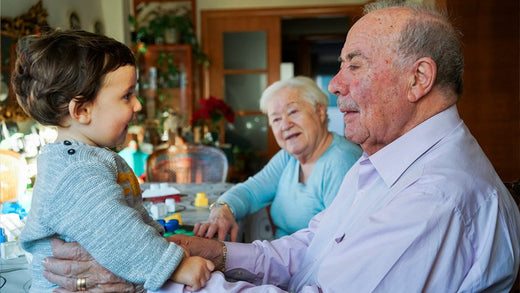Falls are one of the leading causes of injury among older adults, and they can have serious consequences from broken bones to hospitalisation, or even a permanent loss of independence. While many people are aware of the risks posed by stairs or icy pavements, falls can occur in a number of unexpected and easily overlooked places often inside the home, and frequently during everyday activities.
For those with elderly parents, particularly adult children balancing careers, children, and caregiving responsibilities, understanding where these risks lie is important. Many older adults live alone, have underlying health conditions, or are resistant to accepting help. This increases the likelihood of falls and delays in receiving help afterwards.
At Taking Care, our personal alarms for the elderly offer peace of mind and rapid assistance if a fall happens. In this article, we look at some of the less obvious falls-risk areas and provide practical tips on how to reduce risk and prevent falls.
Where do elderly people fall most often?
1. Falls in the bedroom
The bedroom may seem like a safe haven, but it’s actually one of the most common places where the elderly experience falls. Getting in and out of bed can sometimes cause dizziness, especially if blood pressure drops when standing up quickly. There is also the added factor of poor lighting at night which can increase the risk of a fall.
Tips to prevent falls in the bedroom:
- Use nightlights that automatically switch on when motion is detected.
- Use a sturdy bed rail to assist with sitting or standing.
- Keep slippers with non-slip soles by the side of the bed.
- Choose a bed that’s the right height to make getting in and out safer.
- Make sure the route from the bedroom to the bathroom is clear of trip hazards.
- Install motion-sensor nightlights to light the way to the bathroom.
Having a personal alarm for elderly people, like a wearable pendant personal alarm, means that if a fall does happen, help is just the touch of a button away.
2. Falls in the bathroom
Bathrooms are widely recognised as high-risk areas, but of course, falls don’t only happen in the shower. Elderly people can slip on wet tiles, lose balance when reaching for a towel, or trip over bath mats. There are plenty of hazards in a bathroom, particularly for those less stable on their feet, so doing everything you can to make it as safe as possible is key.
Tips to prevent falls in the bathroom:
- Place non-slip mats both inside and outside the bath or shower.
- Install grab bars near the toilet and in the shower area.
- A raised toilet seat can make sitting and standing easier and reduce strain on joints.
- Keep toiletries within easy reach to avoid overreaching.
For added protection, many of our elderly personal alarms are waterproof and can be worn in the bathroom, providing peace of mind and immediate assistance in case of a fall.
3. Falls in the kitchen
The kitchen is another often-overlooked danger zone when it comes to falls. Using a stool or chair to reach high shelves or spills can be a danger. In a kitchen, the combination of uneven flooring and distractions while cooking can create hazards.
Tips to prevent falls in the kitchen:
- Store frequently used items within easy reach.
- Make sure any rugs or mats are secured with non-slip backing.
- Avoid standing on chairs or stools.
Even with all these prevention tips in place, unexpected falls can still happen. Personal alarms with fall detection can automatically raise an alert even if the person is unable to press a button.

4. Falls in the garden
Spending time outdoors can greatly benefit older adult’s mental and physical health, but gardens may also pose unexpected hazards, especially during colder months. Falls in gardens often occur due to uneven paving, misplaced garden tools, or overgrown plants that create tripping hazards. Additionally, wet leaves, moss, or algae on patios can reduce traction, increasing the risk of slipping.
Steps and changes in elevation without proper handrails or sufficient lighting further contribute to the danger, making outdoor spaces potentially hazardous if not properly maintained. In such cases, installing a garden stairlift can be a practical solution for those with limited mobility. Outdoor stairlifts are designed to withstand weather conditions and provide a safe, reliable way to navigate steps and sloped areas, enabling older adults to continue enjoying their gardens with greater confidence and independence.
Tips to prevent falls in the garden:
- Repair uneven paving stones and remove tripping hazards.
- Clear away leaves and debris regularly.
- Install sturdy handrails on steps.
- Keep outdoor areas well-lit during evening hours.
Having a personal alarm for the elderly with a wide range means help is always within reach, even in the garden.
5. Falls in the living room
It’s easy to underestimate the risk of falling in the living room, but low furniture, loose rugs, and electrical cables all create obstacles that some elderly people may find difficult to navigate.
Tips to prevent falls in the living room:
- Secure rugs with double-sided tape or remove them altogether.
- Keep electrical cables tucked safely against the wall.
- Use high-seated chairs with arms to assist with standing.
6. Elderly falls on steps and stairs
Stairs are one of the most common places where an elderly person may trip or fall, but some homes have a single step between rooms that may not be seen as an immediate hazard. These ‘invisible steps’ are often easily overlooked, particularly if the flooring is the same colour which makes depth perception more difficult, so it’s best to implement some safety measures to make them safer for your loved ones.
Tips to prevent falls on hidden steps:
- Highlight steps with contrasting tape or paint.
- Install handrails if possible.
-
Use appropriate lighting to improve visibility.

Unexpected falls risks in everyday places
While stairs and bathrooms are common risk areas, falls often happen in everyday settings too. It could be a slip in the supermarket, a stumble while getting out of the car, or a moment of imbalance at home. That’s why it's important to stay aware, even in places that feel familiar.
- Supermarkets: Slippery floors from spills or polished tiles, plus the distraction of reaching for items.
- Public toilets: Small, slippery spaces with wet floors or poorly placed grab rails.
- GP surgery or hospital: Dizziness from long waits, fasting, or medications, plus the challenge of moving through crowded areas.
- Public transport: Sudden stops, crowded conditions, or unstable footing when boarding or exiting.
- Churches or community halls: Steps without handrails, dim lighting, or loose carpets can cause trips.
- Inside cars: Getting in or out of a vehicle can lead to a fall, especially with low seats or reduced leg strength.
No matter where a fall occurs, having a fall alarm with GPS tracking can offer vital peace of mind.
How personal alarms make a real difference after a fall
Even with the best fall prevention measures, accidents can still happen. Personal alarms for the elderly can be life-saving, particularly when falls happen in hidden or unexpected areas. Here at Taking Care, our personal alarms are designed for ease of use and peace of mind, offering:
- 24/7 monitoring and assistance so help is always at hand.
- Automatic fall detection will trigger an alert even if the wearer cannot press the button.
- Water-resistant options for bathroom safety.
- Coverage throughout the home and garden (or out of home if chosen).
If you or a loved one experiences a fall, pressing the alarm button connects you instantly to trained professionals who can assess the situation and call for help if needed.
It’s best to take action before a fall happens
Knowing the elderly fall risk areas, including these unexpected places, can help you prepare your loved one’s home and daily routines to reduce the likelihood of accidents happening. Fall prevention is always better than dealing with injuries later, so it’s always best to get trip hazards sorted and safety precautions in place.
Find out more about fall alarms
If you’d like to find out more about how Taking Care can support you or your loved ones, explore our range of personal alarms for elderly people or contact us today for advice on the best solution to suit your needs.




